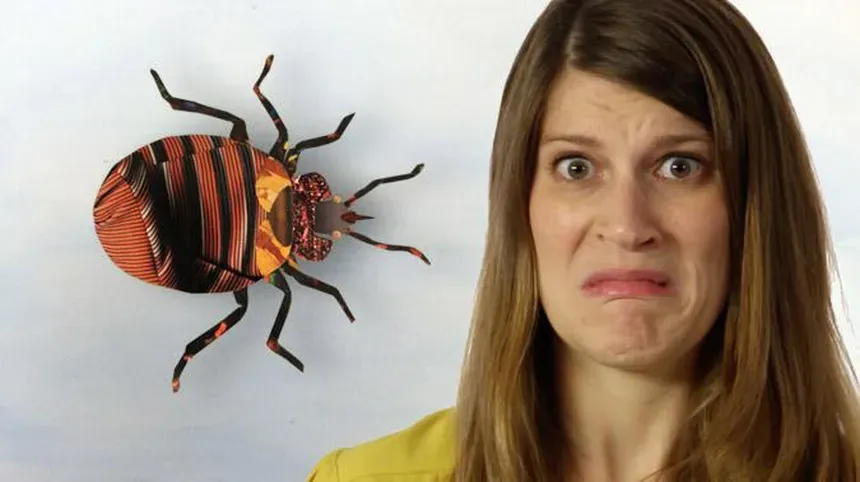Gross Science
Hookworms and the Myth of the "Lazy Southerner"
Season 2 Episode 4 | 4m 16sVideo has Closed Captions
The stereotype of the "lazy Southerner" may have been caused by hookworm infection
The stereotype of the "lazy Southerner" may have been caused by widespread hookworm infections in the American South.
Problems playing video? | Closed Captioning Feedback
Problems playing video? | Closed Captioning Feedback
Gross Science
Hookworms and the Myth of the "Lazy Southerner"
Season 2 Episode 4 | 4m 16sVideo has Closed Captions
The stereotype of the "lazy Southerner" may have been caused by widespread hookworm infections in the American South.
Problems playing video? | Closed Captioning Feedback
How to Watch Gross Science
Gross Science is available to stream on pbs.org and the free PBS App, available on iPhone, Apple TV, Android TV, Android smartphones, Amazon Fire TV, Amazon Fire Tablet, Roku, Samsung Smart TV, and Vizio.

Gross Science on Tumblr
Hi, I'm Anna. I host a YouTube series for NOVA, PBS Digital Studios, and WGBH on the slimy, smelly, creepy world of science. Here I post about all things bizarre and beautiful.Providing Support for PBS.org
Learn Moreabout PBS online sponsorshipMUSIC PLAYING] There's a disease called dracunculiasis, which literally means affliction with little dragons.
Of course, dragons aren't really involved.
You're actually infected with a three-foot-long worm, that mates in your abdomen and squirts larvae out of a hole in your foot.
You just can't make this stuff up.
I'm Anna Rothschild and this is "Gross Science."
[CRACKLING, BUZZING] So dracunculiasis is caused by the Guinea worm, a nematode that's infected humans for millennia and historically has been a major problem in Asia and Africa.
People get infected when they drink water that's been contaminated with tiny water fleas, which house baby Guinea worms.
The water flies die when they hit your stomach, but the larva survive.
And they wriggle through your intestinal wall and into your abdomen, where they mate.
Hello, larva.
After mating, the male Guinea worm dies.
But the female keeps growing, up to three feet long.
Over the course of about a year, she burrows through your body, usually ending up near your feet.
By that point, she's basically just a giant uterus, jam-packed with baby worms.
When she gets close to your skin, she lets out a little spurt of those larvae, which cause a blister to form.
The blister makes your skin feel like it's on fire.
So most people try to dunk their feet in water to cool off.
And water triggers the female worm's full body uterus to rupture, squirting hundreds of thousands of larvae into the water, which might get gobbled up by another flea, yum, beginning the process again.
After all that, you're still left with a debilitating three-foot-long worm in your foot.
And the only way to get rid of a Guinea worm is to pull it out very slowly by wrapping it around a rod, being careful not to break it or else it might rot in your body.
And this painful process can take weeks.
Guinea worms have been with us for so long that some people think that the symbol of medicine, the snake wrapped around the staff, is actually a little nod to Guinea worm extractions.
But they might not be with us for so much longer.
You see, Guinea worms need a human host to reproduce.
So by simply filtering drinking water to keep out the fleas, we can break their life cycle.
In the mid-'80s, there were over 3 million cases in Asia and Africa.
But in 2014, there were only 126.
In fact, they'll probably be completely gone in the next few years, which will make them the first parasite in the world to be eradicated.
And that's one extinction I could get behind.
Ugh.
Got a question about getting worms, let me know in the comments.
And for more "Gross Science," hit Subscribe.
Support for PBS provided by:












